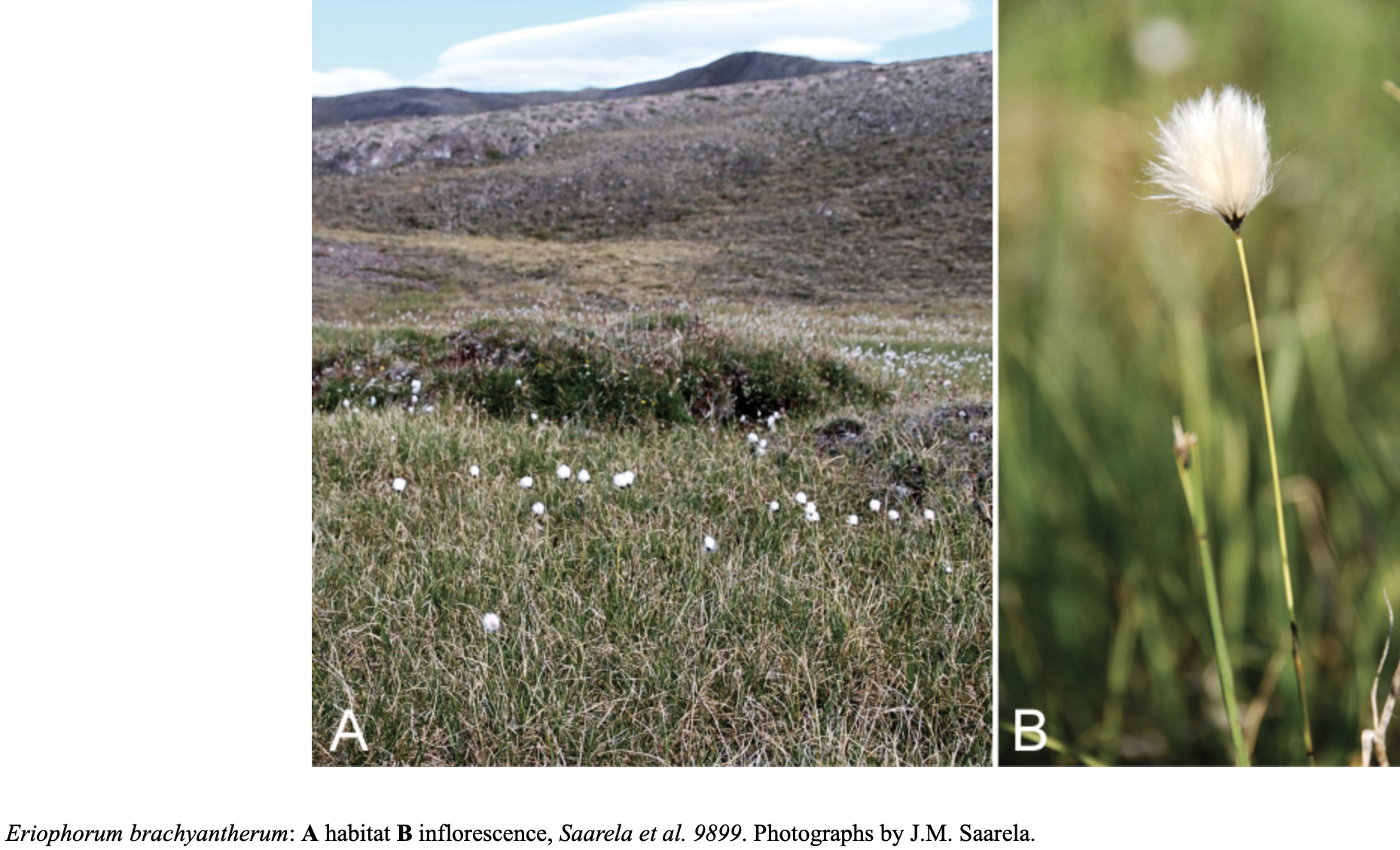Eriophorum Brachyantherum on:
[Wikipedia]
[Google]
[Amazon]
''Eriophorum brachyantherum'', the closed-sheath cotton-grass, short-anthered cotton-grass or northland cottonsedge, is a species that is a part of the Cyperaceae or sedge family. It is commonly found in wet areas, such as bogs and cooler climate zones.

Wildflower DatabaseUSDA Plants DatabaseE-Flora BCLWPeterson
{{Taxonbar, from=Q10592645 brachyantherum
Description
''Eriophorum brachyantherum'' is aperennial
A perennial plant or simply perennial is a plant that lives more than two years. The term ('' per-'' + '' -ennial'', "through the years") is often used to differentiate a plant from shorter-lived annuals and biennials. The term is also wid ...
monocot
Monocotyledons (), commonly referred to as monocots, (Lilianae ''sensu'' Chase & Reveal) are grass and grass-like flowering plants (angiosperms), the seeds of which typically contain only one Embryo#Plant embryos, embryonic leaf, or cotyledon. Th ...
with 30–60 cm long stems, 1–2 cm flowers, and 2–4 cm fruit. The root balls are very thick with a fibrous root system. The flower is a single, white, cotton ball-like, feathery flower. In the center of the flower there is an oval shaped fruit that contains short anthers. The fruit is an achene that has scales and is surrounded by perianth
The perianth (perigonium, perigon or perigone in monocots) is the non-reproductive part of the flower, and structure that forms an envelope surrounding the sexual organs, consisting of the calyx (sepals) and the corolla ( petals) or tepals when ...
bristles. The bristles are extended within the fruit and tend to be silky. This plant grows in grass-like environments and blooms during the summer months of June, July, and August. 
Distribution
The northland cottonsedge has a circumboreal distribution in North America,Europe
Europe is a large peninsula conventionally considered a continent in its own right because of its great physical size and the weight of its history and traditions. Europe is also considered a subcontinent of Eurasia and it is located entirel ...
, and Asia
Asia (, ) is one of the world's most notable geographical regions, which is either considered a continent in its own right or a subcontinent of Eurasia, which shares the continental landmass of Afro-Eurasia with Africa. Asia covers an are ...
. In the United States
The United States of America (U.S.A. or USA), commonly known as the United States (U.S. or US) or America, is a country primarily located in North America. It consists of 50 states, a federal district, five major unincorporated territori ...
it is primarily occurs in Alaska
Alaska ( ; russian: Аляска, Alyaska; ale, Alax̂sxax̂; ; ems, Alas'kaaq; Yup'ik: ''Alaskaq''; tli, Anáaski) is a state located in the Western United States on the northwest extremity of North America. A semi-exclave of the U.S. ...
, though it has been recorded from Idaho and Washington as well. In Canada
Canada is a country in North America. Its ten provinces and three territories extend from the Atlantic Ocean to the Pacific Ocean and northward into the Arctic Ocean, covering over , making it the world's second-largest country by tot ...
it occurs natively almost country-wide (AB, BC, MB, NL, NT, NU, ON, QC, SK, YT). It prefers to grow in wet areas, and is commonly found in or near bogs, tundra, muskeg, and fens.
Habitat
''Eriophorum brachyantherum'' can be found in water-saturated substrates with high organic matter content. Damp areas with poor drainage such as wet meadows, tundra landscapes, andflood plains
A floodplain or flood plain or bottomlands is an area of land adjacent to a river which stretches from the banks of its channel to the base of the enclosing valley walls, and which experiences flooding during periods of high discharge.Goudi ...
are common occupancy areas for populations of this herb. Muskeg swamps are also common environments where this plant is found because of the heavily saturated soil and high organic matter from partially dead vegetation and mosses that occupy the surrounding area. Northland cottonsedge is seldom seen distant from forest edges.
Reproductive structures
''Eriophorum brachyantherum'' flowers in the summertime. The central flowering stems of this plant are significantly taller than the leaves surrounding them. Both sexes are present on each floret of the terminal spike. There are 3 stamens with the anthers splitting longitudinally and 3 ovary carpels that are syncarpous. Each ovary consists of 3 stigmas and 1 ovule. The seed heads consist of white cotton-like fibers and are dispersed by the wind to spread the seeds.Uses
The stem and root of this plant were previously used as food by Native Americans, albeit very seldom. The Native Americans would boil the root or simply eat it raw, and for the stem they would store it or fry it in seal oil. TheYupik Yupik may refer to:
* Yupik peoples, a group of indigenous peoples of Alaska and the Russian Far East
* Yupik languages, a group of Eskimo-Aleut languages
Yupꞌik (with the apostrophe) may refer to:
* Yup'ik people
The Yup'ik or Yupiaq (sg ...
people used an extract from the leaves as a medical treatment for a variety of gastrointestinal problems.
References
External links
Wildflower Database
{{Taxonbar, from=Q10592645 brachyantherum